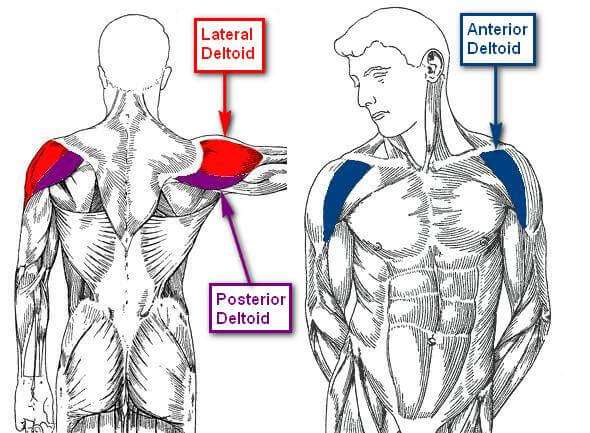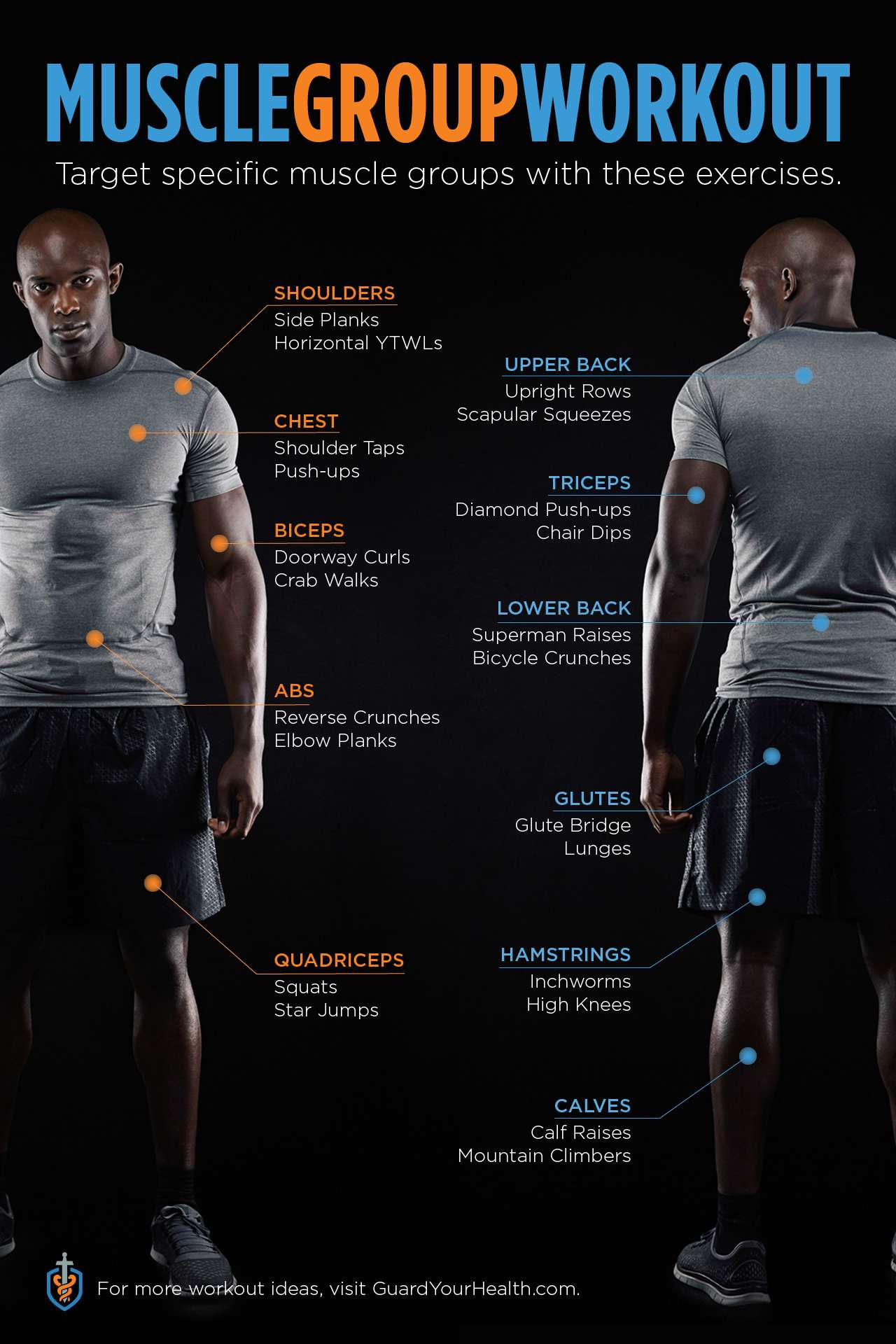So, you’ve got your gym gear on, ready to conquer your workout routine, but there’s one question lingering in your mind: in what order should you work out your muscle groups? Should you start with the upper body or focus on the lower body first? In this article, we’ll explore the best order to work out your muscle groups to optimize your strength training and help you achieve your fitness goals. Whether you’re a beginner or a seasoned gym-goer, understanding the order of your workouts can make a world of difference in your fitness journey. Let’s dive in and find out how to maximize your gains!
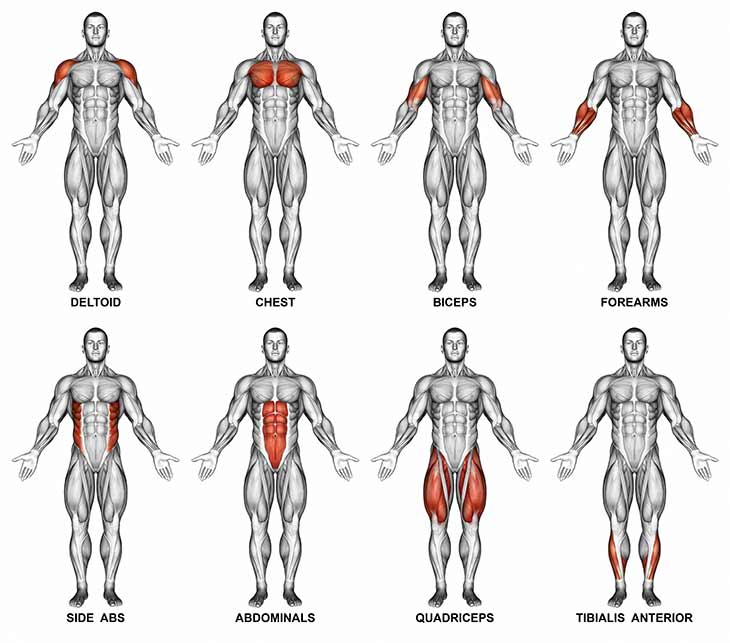
Importance of Proper Muscle Group Order
When it comes to your workouts, the order in which you target your muscle groups can play a significant role in achieving optimal results. Proper muscle group order not only helps with muscle activation but also ensures the prevention of muscle imbalances and allows for efficient workout progression. By understanding the importance of proper muscle group order, you can design an effective and well-rounded fitness routine that yields the best possible outcomes.
Upper Body Muscle Groups
Before diving into the specifics of muscle group order, it’s crucial to understand the different muscle groups in the body. In the upper body, there are several major muscle groups that deserve attention. These include the chest, back, shoulders, and arms. Each of these muscle groups plays a unique role in upper body strength and functionality.
Chest
The chest muscles, also known as the pectoralis muscles, are located in the front of your upper body. They are responsible for various pushing movements, such as bench presses and push-ups. Working on your chest muscles not only contributes to overall upper body strength but also helps create a more defined and sculpted chest.
Back
While the chest focuses on pushing movements, the back muscles are responsible for pulling actions. The major muscles in the back include the latissimus dorsi, trapezius, and rhomboids. Strengthening the back muscles not only helps improve posture and spinal stability but also enhances overall upper body strength.
Shoulders
The shoulders, or deltoids, provide stability and mobility to the upper body. They are involved in various upper body exercises, ranging from shoulder presses to lateral raises. By incorporating shoulder exercises into your routine, you can develop more defined and well-rounded shoulder muscles while enhancing overall upper body strength and functionality.
Arms
The arm muscles consist of two main muscle groups: the biceps and the triceps. The biceps are located on the front of your upper arm and are responsible for flexing the elbow joint. On the other hand, the triceps are situated on the back of the upper arm and are responsible for extending the elbow joint. Strengthening both the biceps and triceps is essential for achieving well-toned and powerful arms.
Lower Body Muscle Groups
Moving on to the lower body, there are several key muscle groups that need attention for a well-rounded workout routine. These include the quadriceps, hamstrings, glutes, and calves. Each plays a crucial role in lower body strength and functionality.
Quadriceps
The quadriceps, often referred to as quads, are the muscles located at the front of the thigh. These muscles are responsible for extending the knee joint and are engaged in activities such as squats and lunges. Strengthening the quadriceps not only improves lower body strength but also helps with overall lower body stability and power.
Hamstrings
Opposite to the quadriceps are the hamstrings, a group of muscles located at the back of the thigh. The hamstrings are responsible for bending the knee joint and are actively engaged in exercises like deadlifts and hamstring curls. Developing strong and flexible hamstrings is crucial for maintaining lower body balance and preventing injuries.
Glutes
The gluteal muscles, commonly known as the glutes, are the largest muscles in the body and are located in the buttocks. They play a vital role in lower body movement, including hip extension and rotation. Strengthening the glutes not only improves overall lower body strength but also helps with posture, stability, and athletic performance.
Calves
Lastly, the calves are the muscles located at the back of the lower leg. These muscles are responsible for ankle plantar flexion, providing power for activities such as walking, running, and jumping. By targeting the calves in your workouts, you can develop stronger lower legs and enhance your overall lower body strength and endurance.
Core Muscles
Now let’s shift our focus to the core muscles, which are essential for stability, balance, and overall body control. The core consists of several muscle groups, including the abs, obliques, and lower back.
Abs
The abdominal muscles, commonly known as abs, are located in the front of the abdomen. These muscles contribute to spine stabilization, trunk flexion, and rotation. Strengthening your abs not only helps achieve a more defined and toned midsection but also improves overall core stability and posture.
Obliques
The oblique muscles are located on the sides of the abdomen and are responsible for lateral flexion and rotation of the trunk. Targeting the obliques helps improve core strength, stability, and overall functional movement.
Lower Back
The lower back muscles, specifically the erector spinae, are crucial for maintaining proper posture and spinal stability. Strengthening the lower back muscles not only helps prevent lower back pain but also enhances overall core strength and functionality.
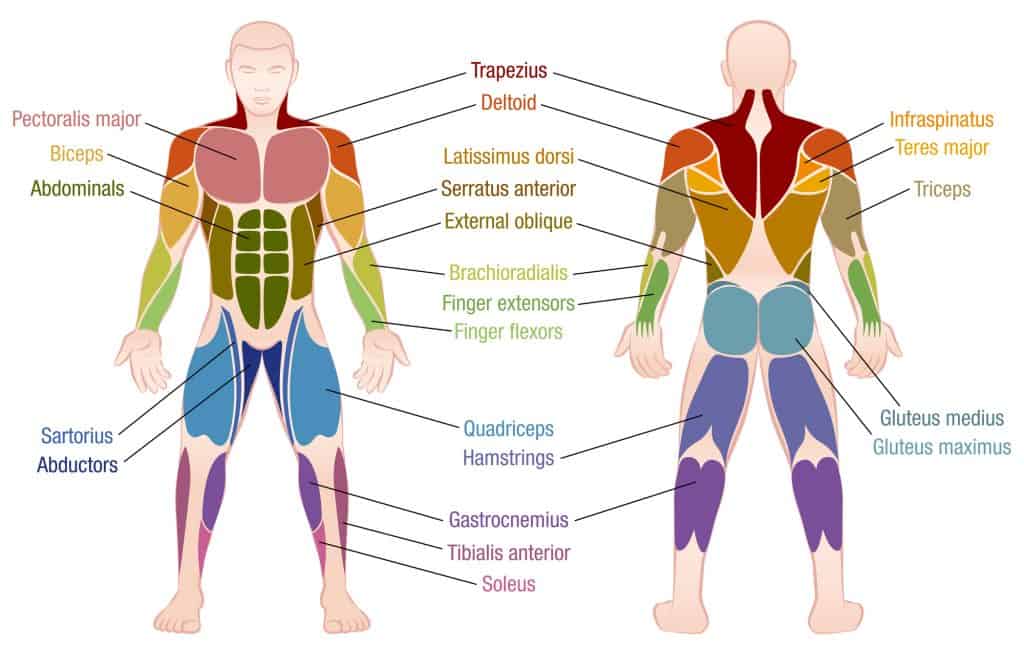
Functional Muscle Groups
In addition to the individual muscle groups, it’s important to consider functional muscle groups when designing your workout routine. Functional muscle groups involve compound movements that engage multiple muscle groups simultaneously, reflecting real-life movements and activities.
Legs and Glutes
The legs and glutes together form a functional muscle group as they often work in synergy during various lower body movements. Exercises like squats and lunges target both the quadriceps and glutes while enhancing overall lower body strength and functionality.
Pulling Muscles
Pulling muscles refer to the muscle groups involved in pulling or rowing movements. These include the back muscles, biceps, and posterior deltoids. Exercises like bent-over rows and pull-ups target these muscle groups and help improve upper body strength and posture.
Pushing Muscles
On the other hand, pushing muscles involve muscle groups responsible for pushing movements, such as the chest, shoulders, and triceps. Exercises like bench presses and shoulder presses focus on these muscle groups, promoting upper body strength and stability.
Core
Lastly, the core muscles, as mentioned earlier, play a significant role in functional movement and overall body control. Engaging the core during compound exercises helps improve stability, balance, and overall functional strength.
Compound vs. Isolation Exercises
Understanding the difference between compound and isolation exercises is crucial for designing a well-balanced workout routine.
Compound Exercises
Compound exercises involve multiple muscle groups and joints, allowing for greater muscle activation and calorie expenditure. These exercises typically mimic real-life movements and provide functional strength. Examples of compound exercises include squats, deadlifts, and bench presses.
Isolation Exercises
Isolation exercises, on the other hand, target a specific muscle group and involve movement around a single joint. These exercises are ideal for focusing on muscle development and achieving specific aesthetic goals. Examples of isolation exercises include bicep curls, tricep extensions, and calf raises.
Incorporating Both
To have a well-rounded fitness routine, it’s essential to incorporate both compound and isolation exercises. Compound exercises should form the foundation of your workouts, as they engage multiple muscle groups and promote overall strength and functionality. Isolation exercises can then be added to target specific muscle groups and address individual aesthetic goals.
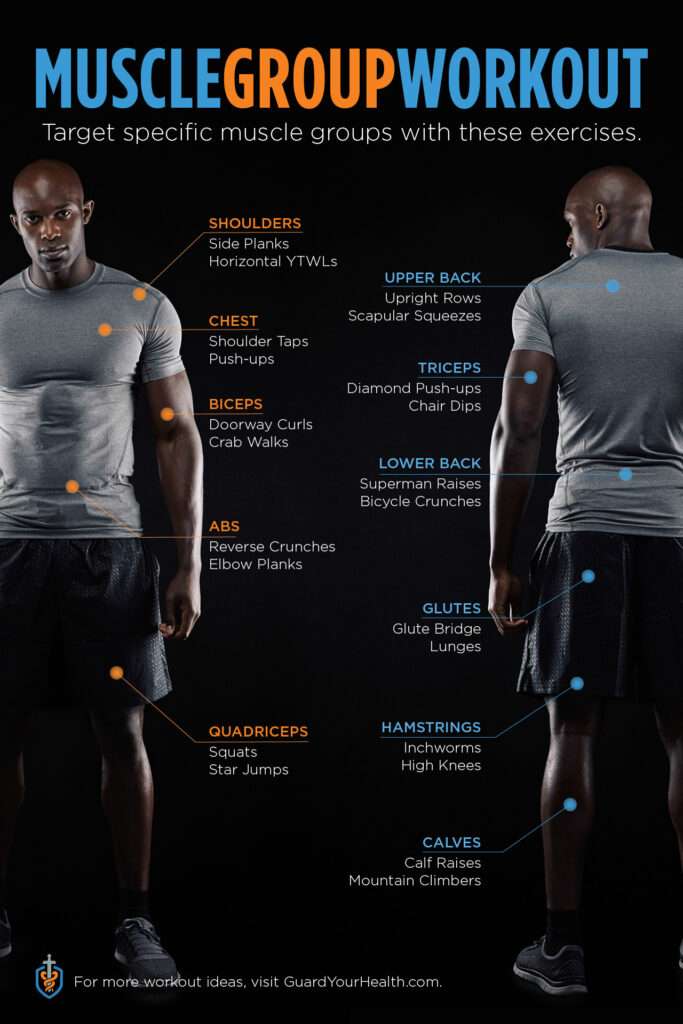
Specific Exercise Order
Now that we have a solid understanding of muscle groups, it’s time to delve into the specific order in which exercises should be performed within a workout routine. While individual preferences may vary, the following order provides a general guideline for optimal muscle activation and efficient workout progression.
Warm-up Exercises
Before diving into the main workout, it’s crucial to warm up your muscles and prepare them for the upcoming session. Start with dynamic stretches and light cardio exercises to increase blood flow and warm up the entire body. This helps reduce the risk of injury and prepares your muscles for the upcoming workout.
Compound Lifts
Following the warm-up, focus on compound exercises that engage multiple muscle groups simultaneously. These exercises should be the core of your workout as they provide a solid foundation for overall strength and functionality. Start with exercises like squats, deadlifts, bench presses, and rows. Performing compound lifts early in your workout routine allows you to utilize maximum energy and strength.
Secondary Muscles
After completing the compound exercises, move on to exercises that target secondary muscles. These are muscles that indirectly assist in the compound movements you just performed. For example, after performing squats, you can focus on exercises like lunges and step-ups to target the glutes and quadriceps further.
Isolation Exercises
Once you’ve worked on the primary and secondary muscles, it’s time to shift your focus to isolation exercises. These exercises allow you to target specific muscle groups and address individual aesthetic goals. For instance, after completing compound and secondary exercises for the upper body, you can incorporate bicep curls and tricep extensions to further enhance arm definition.
Core Activation
Lastly, end your workout with core activation exercises. This helps maintain proper posture, spinal alignment, and overall core stability. Planks, Russian twists, and leg raises are excellent choices for engaging the core muscles effectively.
Alternating Muscle Groups
An alternative approach to structuring your workouts is to alternate between upper body and lower body exercises or push and pull movements. This method allows for proper muscle recovery while maximizing workout efficiency.
Upper Body and Lower Body
By alternating between upper body and lower body exercises, you give the muscles in one region of the body time to rest while working on the other. For example, you can focus on upper body exercises one day and lower body exercises the next. This approach ensures that each muscle group receives adequate rest and recovery time.
Push and Pull
Alternatively, you can structure your workouts around push and pull movements. This involves alternating between exercises that primarily involve pushing muscle groups (chest, shoulders, triceps) and exercises that primarily involve pulling muscle groups (back, biceps). By incorporating push and pull exercises in your routine, you achieve a well-balanced workout while minimizing the risk of overtraining specific muscle groups.
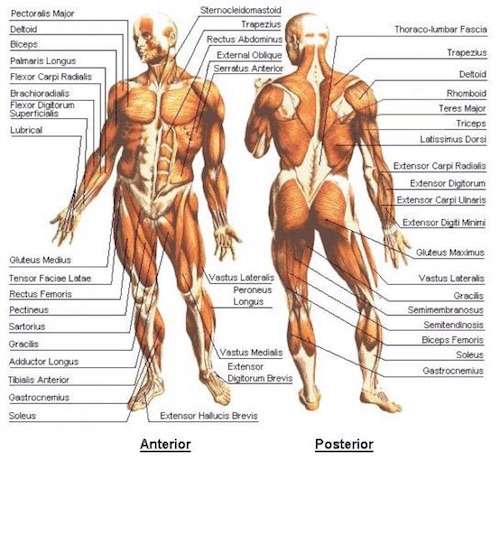
Individual Preferences and Goals
When determining the specific order of muscle groups in your workouts, it’s essential to consider your individual preferences and goals. Your workout routine should be tailored to your specific needs and aspirations.
Sport-Specific Training
If you have specific athletic goals, such as improving performance in a particular sport, your exercise order should align with those objectives. For example, if you’re a swimmer, you may want to prioritize exercises that target the muscles involved in swimming strokes.
Aesthetics
If your primary goal is to achieve a specific physique or focus on aesthetic goals, you may choose to prioritize certain muscle groups in your workout routine. For instance, if you want to develop a more defined chest, you may choose to dedicate more time and effort to chest exercises.
Injury Rehabilitation
In some cases, you may need to modify the order of muscle groups to accommodate injury rehabilitation. If you’re recovering from a specific injury, consult with a healthcare professional or a qualified trainer to design a workout routine that allows for proper healing and rehabilitation.
Adjusting Order Over Time
Lastly, it’s important to note that the order of muscle groups in your workouts isn’t set in stone. Over time, you may need to adjust the order to prevent plateaus and ensure progressive overload.
Periodization
One approach to adjusting the order of muscle groups over time is through periodization. Periodization involves dividing your training program into specific phases, each with its own focus and emphasis. For example, you can dedicate one phase to strength training, another to hypertrophy, and another to endurance. By periodically changing the order and emphasis of muscle groups, you can maintain consistent progress and prevent plateaus.
Plateau Prevention
Plateaus can occur when your muscles adapt to a specific training stimulus and stop progressing. To prevent plateaus, consider changing the order of muscle groups within your workout routine. By surprising your muscles with new challenges and stimuli, you can continue making progress and achieve your fitness goals.
Progressive Overload
Incorporating progressive overload is another way to adjust the order of muscle groups over time. By gradually increasing the weight, reps, or intensity of your exercises, you keep challenging your muscles and promoting growth. It’s important to regularly reassess your workout routine and make necessary adjustments to ensure continuous improvement.
In conclusion, proper muscle group order is essential for optimal muscle activation, prevention of imbalances, and efficient workout progression. By targeting the various upper body, lower body, and core muscle groups in a strategic order, you can design a comprehensive and well-rounded workout routine. The specific order can be adjusted based on individual preferences, goals, and the need for progressive overload. By understanding and implementing the importance of proper muscle group order, you can maximize your workout efficiency and achieve the best possible results.
